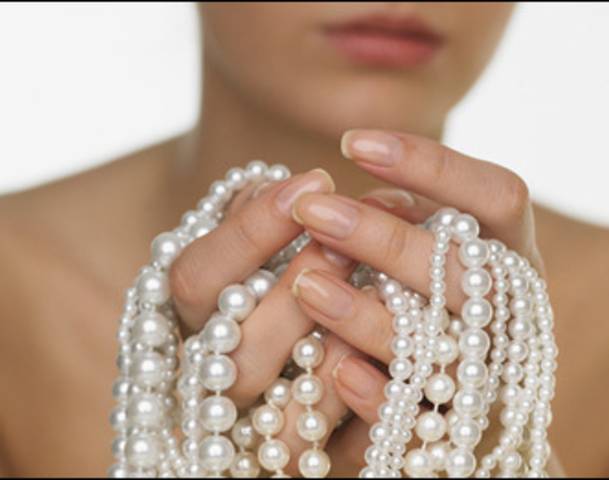Cultured saltwater pearls, or sea pearls, are expanded today by pearl producing oysters in a number of parts on the world, such as Australia, China, French Polynesia, Indonesia, Japan, Korea, and also the Philippines. One of the better known will be the Japanese Akoya (the typical round, bright pearl), the bigger South Marine pearl, and also the naturally african american Tahitian bead.
Inside 1950s, cultured pearls recommended Japanese Akoya pearls, and Minamoto owned the majority of the oyster mattresses; about 12, 000, 000 oysters, accounting for approximately 75% in the world's supply of cultured pearls. Because 1960s, nonetheless, the creation of cultured pearls did start to extend to other pearl farmers within Japan, and also to other areas of the entire world.
While basic pearls generating process will be the same in a very saltwater or perhaps freshwater mollusc, in the case of round cultured pearls there is certainly one significant difference; the production of most freshwater pearls, for example the rice krispie sort, requires the particular insertion of a bit of mantle structure alone, while the particular production of round cultured pearls requires the insertion of rounded bead nucleus beyond just the piece of mantle structure. Following the particular surgical implant with the nucleus, numerous will sometimes reject the particular implant or perhaps die; of the remaining, a lot more will kick the bucket before crop. Only 30% to help 35% with the original group of oyster may actually develop a pearl. Just a very smaller faction with the pearls produced is going to be fine quality.
Salt water cultured pearls command higher charges than new water cultured pearls. The price and your risks interested in producing deep sea cultured pearls usually are much better. They usually are much costlier to make than almost all freshwater pearls, although U . s . freshwater cultured pearls are also very expensive to make. Higher expenses are incurred just to obtain the shell where the spherical, mother-of-pearl usually are fashioned, and make these; higher work costs usually are incurred pertaining to skilled technicians to complete the implant surgical treatment; higher expenses are incurred must be much greater quantity of "spat" (baby oyster) must be collected and also raised to insure an acceptable supply of mature oyster pertaining to cultivation, and must be much greater quantity of oysters is essential for a good yield; etc.
The most crucial reason for the fee difference, however, is that the individual ocean oyster typically can produce just a few sizable pearls at any given time. I Us freshwater cultured pearl production, only one to five may be produced at any given time. By assessment, in China or Japan, a single freshwater mussel may produce 15 -- 20 pearls at any given time, or much more.
Inside 1950s, cultured pearls recommended Japanese Akoya pearls, and Minamoto owned the majority of the oyster mattresses; about 12, 000, 000 oysters, accounting for approximately 75% in the world's supply of cultured pearls. Because 1960s, nonetheless, the creation of cultured pearls did start to extend to other pearl farmers within Japan, and also to other areas of the entire world.
While basic pearls generating process will be the same in a very saltwater or perhaps freshwater mollusc, in the case of round cultured pearls there is certainly one significant difference; the production of most freshwater pearls, for example the rice krispie sort, requires the particular insertion of a bit of mantle structure alone, while the particular production of round cultured pearls requires the insertion of rounded bead nucleus beyond just the piece of mantle structure. Following the particular surgical implant with the nucleus, numerous will sometimes reject the particular implant or perhaps die; of the remaining, a lot more will kick the bucket before crop. Only 30% to help 35% with the original group of oyster may actually develop a pearl. Just a very smaller faction with the pearls produced is going to be fine quality.
Salt water cultured pearls command higher charges than new water cultured pearls. The price and your risks interested in producing deep sea cultured pearls usually are much better. They usually are much costlier to make than almost all freshwater pearls, although U . s . freshwater cultured pearls are also very expensive to make. Higher expenses are incurred just to obtain the shell where the spherical, mother-of-pearl usually are fashioned, and make these; higher work costs usually are incurred pertaining to skilled technicians to complete the implant surgical treatment; higher expenses are incurred must be much greater quantity of "spat" (baby oyster) must be collected and also raised to insure an acceptable supply of mature oyster pertaining to cultivation, and must be much greater quantity of oysters is essential for a good yield; etc.
The most crucial reason for the fee difference, however, is that the individual ocean oyster typically can produce just a few sizable pearls at any given time. I Us freshwater cultured pearl production, only one to five may be produced at any given time. By assessment, in China or Japan, a single freshwater mussel may produce 15 -- 20 pearls at any given time, or much more.
.jpg)
.jpg)
.jpg)
Comments
Post a Comment